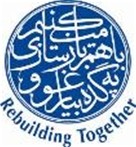The Afghanistan Reconstruction Trust Fund (ARTF) is one of the most important funding entities supporting the ongoing rebuilding and development process in Afghanistan. Learn more about this critical organization with the following four frequently asked questions:
-
What is the ARTF?
 Established in 2002, the ARTF is a multidonor trust fund that is managed by the World Bank and currently supported by 34 international donors. Since 2016, these donors have contributed more than US$9 billion for reconstruction projects and service delivery programs all across Afghanistan. The ARTF is the most important multidonor mechanism for nonsecurity, on-budget support in Afghanistan, and it is by far the preferred vehicle for pooled international funding. Its centrally administered structure allows for the well-coordinated and coherent channeling of funds, provides the Government of Afghanistan with funding predictability, and offers excellent transparency and high accountability for its donors, along with low overhead and transaction costs.
Established in 2002, the ARTF is a multidonor trust fund that is managed by the World Bank and currently supported by 34 international donors. Since 2016, these donors have contributed more than US$9 billion for reconstruction projects and service delivery programs all across Afghanistan. The ARTF is the most important multidonor mechanism for nonsecurity, on-budget support in Afghanistan, and it is by far the preferred vehicle for pooled international funding. Its centrally administered structure allows for the well-coordinated and coherent channeling of funds, provides the Government of Afghanistan with funding predictability, and offers excellent transparency and high accountability for its donors, along with low overhead and transaction costs.
-
How is the ARTF managed and governed?
There are three tiers of governance within the ARTF. Combined with three additional working groups, this management framework is both sound and flexible, allowing the ARTF to quickly and consistently adapt to changing circumstances and development priorities. The three-tiered governance framework includes the following entities:
The ARTF Steering Committee—This committee sets the strategic direction for the ARTF at quarterly meetings chaired by the World Bank and the Afghan Minister of Finance. Members of the committee are all either ARTF donors or representatives from the World Bank and the Afghan Ministry of Finance. To ensure transparency, the Steering Committee publicly posts full notes of its meetings on the ARTF website.
The ARTF Management Committee—The Management Committee is responsible for implementing the vision and direction set by the Steering Committee. This includes reviewing and approving funding proposals, reviewing ARTF finances, and making recommendations on ARTF management. Members of the Management Committee include the Afghan Ministry of Finance, the Islamic Development Bank, the Asian Development Bank, the United Nations Development Program, and the World Bank, with the United Nations Assistance Mission to Afghanistan taking part as an observer.
The ARTF Administrator—The World Bank serves as the Administrator for the ARTF. As such, it is responsible for monitoring and reporting on all aspects of ARTF performance. In particular, the World Bank ensures that the allocation of funds takes place in accordance with the Financing Strategy set and agreed upon by donors and the Government of Afghanistan, and in line with established fiduciary standards and performance measures.
The working groups that support the three tiers of governance are the Incentive Program Working Group, a donor group that works to set policy benchmarks for the ARTF with the Government of Afghanistan; the Strategy Group, which reviews the Financing Strategy and its implementation; and the Gender Working Group.
-
How is the ARTF aligned with government priorities?
Working and collaborating closely with the Government of Afghanistan is a key priority for the ARTF; likewise, the government’s relationship with the ARTF is one of its most valued partnerships. Unlike some donor agencies that never give local governments the opportunity to work with funding directly, the ARTF channels all funds through government systems, and all projects are implemented by ministries and government agencies.
Naturally, such a close relationship means that ARTF’s work is closely aligned with the Afghanistan National Development Strategy outlined by the government. In 2010, the government established 22 National Priority Programs (NPPs) and reached an agreement with the ARTF that a minimum of 80% of donor assistance would go towards supporting these priorities. This has proved to be the most effective way for the international community to support Afghanistan’s own development goals. To date, the ARTF has been an instrumental player in many of Afghanistan’s biggest development achievements.
Beyond questions of funding, the ARTF is also a helpful resource for the Government of Afghanistan in that it provides the government with an important platform for dialogue around key policy reforms.
-
How are ARTF funds allocated?
There are two different “windows” through which ARTF funds are allocated. The first is the Recurrent Cost window: under this funding avenue, the government receives an annual reimbursement for a predetermined portion of eligible and non-security-related operating expenditure. This recurrent cost funding is an important element of Afghanistan’s fiscal sustainability; while the government is progressively improving its own revenue base through activities like customs and taxation, it is not yet able to fully support its recurrent expenditures with domestic revenues alone. ARTF Recurrent Cost window funding helps provide consistency and stability as the government works to improve its own revenue collection processes. To date, nearly 75% of recurrent costs have fallen into the category of payroll expenses, including wages for teachers and health workers.
The second ARTF funding window is the Investment window: this funding avenue provides grant-based financing for investments that support the National Priority Programs described earlier.
